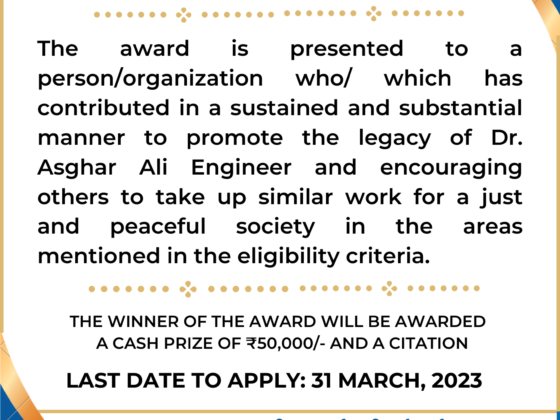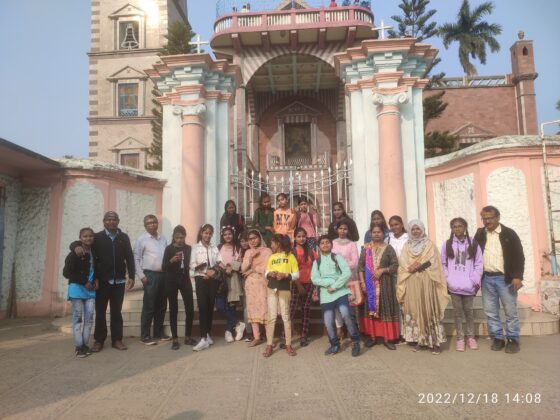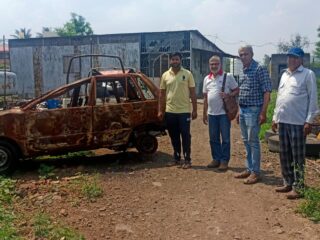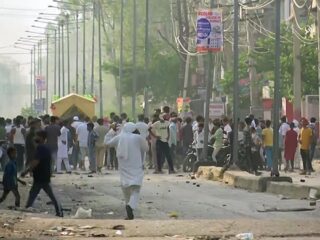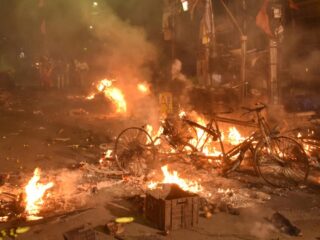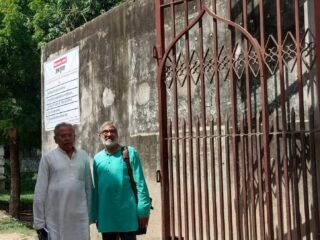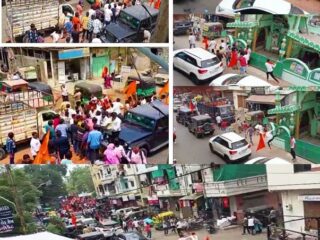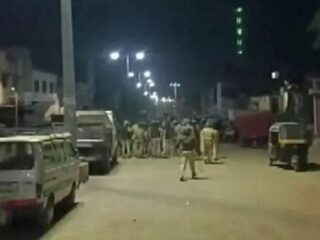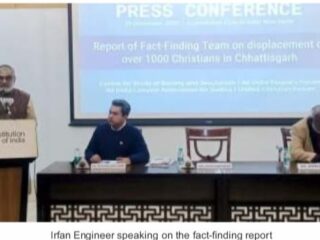Introduction:
Communal tensions were witnessed in the town of Khargone in Madhya Pradesh on 10th April, 2022 on the occasion of Ram Navami. On this occasion, two processions were organized in Khargone, one by the Raghuvanshi community who consider themselves as descendants of Lord Ram and the other one by Hindu right wing groups- Bajrang Dal and Gauraksha Samiti. Though there were reports of tensions and verbal spat between the police and BJP official over barricading of a particular route during the first procession, the second procession was taken out and riot broke out near the mosque near Talab chowk in Khargone. It was alleged that the Muslims threw stones at the procession which led to the violence. Violence spread to Sanjay Nagar, Anandnagar and other areas. Some houses, majority belonging to the Muslims and shops were torched by the rioters. One death of a Muslim boy, Idris Khan was reported. The local administration razed down the houses of Muslims alleging encroachment on 11th April. The demolition came on the heels of the statements of Madhya Pradesh Chief Minister and Home Minister warning that the properties from where stones were thrown will be reduced to a pile of stones. Curfew was imposed on the town for about a month. Some of the riots accused, mostly Muslims, were slapped with charges under the National Security Act.
Communal riots were reported in other places including Jharkhand, Gujarat, and Rajasthan etc on the same day. Similar pattern of communal violence followed by demolitions by local administration were reported from Gujarat and Khargone. Centre for Study of Society and Secularism (CSSS) organized a fact-finding mission to Khargone between 20th and 22nd October, 2022. Though CSSS was trying to organize a fact finding sooner, there were reports of intimidation of reporters and scholars, curfew imposed in the town and was thus discouraged to visit Khargone. The fact-finding team consisted of Irfan Engineer, Director of Centre for Study of Society and Secularism, author and prominent activist, Neha Dabhade, Deputy Director of CSSS and Vijay Kumar, social activist.
Methodology:
The team visited Khargone and met victims whose houses were torched and attacked. The team met the Superintendent of Police, Raghubir Singh Yadav, MLA Ravi Joshi, Congress leader Mr. Govind Mujalat, some journalists and Muslim leaders who requested anonymity and Lachuram Engle, an RSS functionary and school teacher. Importantly, the team met owners of shops which were demolished by the local administration. The team had a discussion with some adivasis youth leaders of Khargone. The team also surveyed the areas where the riot took place and also the site of demolitions.
Table -1: Community wise population of Khargone City
| Community | Population | Percentage | |
| Hindu | 71,434 | 61.50 | |
| Muslim | 43,248 | 37.23 | |
| Christian | 212 | 0.18 | |
| Sikh | 444 | 0.38 | |
| Buddhist | 63 | 0.05 | |
| Jain | 650 | 0.56 | |
| Others | 4 | 0.00 | |
| Not Stated | 95 | 0.08 | |
Background of Khargone:
Khargone district is situated on the south west border of the state of Madhya Pradesh. Dhar, Indore and Dewas are situated in the North of the district and Maharashtra to its south. The district has a sizeable population of adivasis. There are 11.16% Scheduled Caste (SC) and 38.98% Scheduled Tribe (ST) of total population in Khargone (West Nimar) district.
Thus, majority of the population is Hindu. The Hindu communities include the dominant Mahajan community, which own oil mills and jewellery shops. They own valuable properties and are also moneylenders. The Mahajans lend money mostly to the poor adivasis. The other Hindu communities are the OBC communities of Mahaji, Mali and Kachar. The Kahar community is mainly Dalit and fisherfolk. The Muslims, though a small community, owns most of the bakeries in Khargone. Majority of the Muslims are in the unorganized sector engaging in daily wages and labour. Few of them sell fruits and vegetables.
Political context:
Khargone falls under the Malwa – Nimar region which also includes Ujjain, Indore, Ratlam, Barwani and Khargone. It has been a traditional RSS bastion. BJP came to power in Madhya Pradesh first in 1990 and since then Malwa- Nimar region has been dominated by BJP. In the 2013 assembly elections, BJP won 56 out of 66 seats in the region and all the eight Lok Sabha seats from this region in May 2014. But in the 2018 assembly elections, BJP lost a considerable number of seats in the Khargone and Barwani districts. For the first time in almost three decades, the Congress won 35 seats out of the total 66 while the BJP’s tally fell to 28, in the 2018 assembly polls. The remaining three seats were won by independent candidates.
In 2003, 2008 and 2013, the BJP won six of eight seats. But in 2018, the saffron party was able to win just one seat while the Congress cornered eight of them. Khargone and Barwani districts have 10 assembly seats- out of which seven are reserved. In Khargone, the Congress won five out of six seats and the remaining one was bagged by a Congress rebel. In Barwani, out of four seats, the BJP managed to win only one. Though the BJP toppled the Congress government in MP in 2020 after the exit of Jyotiaditya Scindia, Congress has managed make electoral in roads in the BJP dominated region triggering political competition. This has resulted in attempts at polarization of communities along religious lines which reflects in frequent communal tensions in the region.
Past communal violence:
It is to be noted at the outset that the region of Malwa- Nimar has been peaceful in the past. No major riots took place in the region in the past. The region started witnessing communal riots only a few years back. The state of Madhya Pradesh has witnessed major communal tensions in the past, and it has been on a communal conundrum in the last few years. For instance, from beginning of 2022 to June 2022, according to the Madhya Pradesh police, the state has recorded 479 cases of riots, registered under section 147 of the Indian Penal Code. Of them, over 30% of the cases are related to communal violence. The state witnessed a similar wave of communal riots between December 2020 and April 2021 in the Malwa region. At least 12 incidents of communal tension were reported from the region since September 2020 where section 153A (relating to communal hatred) was invoked (Kakvi, 2022).
What characterized and marked a shift in communal riots from the 2020 riots onwards that took place in December in Ujjain, Mandsaur and Indore, was the emboldened attitude of Hindu right wing organizations to take the aggressive rallies as an expression of assertion of domination of Lord Ram- a symbol appropriated by the Hindu right wing in India. In 2020, the rallies were organized by Hindu right wing organizations including Bharatiya Janata Yuva Morcha to collect ‘donation’ for the construction of the Ram Temple in Ayodhya. These rallies raised provocative slogans in Muslim majority areas which included vulgar comments on Muslim women. The rallies instigated and humiliated the Muslim community. When the stone pelting took place during these rallies, the Muslims alone were blamed. The administration subsequently in Ujjain razed down Muslim houses claiming that it did not have the requisite permissions. This has emerged as a pattern. The Hindu right wing organizations enjoy impunity and political patronage in provoking and instigating riots. The administration then targets the Muslims by razing down their properties claiming them to be illegal.
A false narrative by the functionaries of the state then justifies this discriminatory and selective action targeting the minorities inflicting collective punishment on the community. Contrary to the facts, the home minister of the state portrayed the Muslims to be rioters. The Home Minister as well as the Chief Minister of the state have claimed that rioters who throw stones would be punished by razing down their houses, clearly indicating and alleging that Muslims are rioters. “Those indulging in riots and stone-pelting, causing damage to public and private property, will not be spared,” claimed Home Minister of MP, Narottam Mishra (Siddiqui, 2021). Subsequently Madhya Pradesh Public and Private Property Damage Resolution and Recovery Act was passed.
Political mobilization of Adivasis: Another manifestation of communal politics:
The Congress strategy to win elections in the region is to mobilize the ST, SC and Muslim votes along with a section of OBCs with inclusive approach respecting cultural diversity of the marginalized community. The STs, SCs and Muslims form a formidable majority of electorate in the region. STs, SCs and the Muslims can be mobilized on their livelihood issues, and ensuring that the benefits of the welfare schemes percolate to them.
The only hope of the BJP to win elections in Malwa-Mewar region is by Hinduizing the adivasis, homogenizing Hindu culture and polarizing the communities along religious fault lines. The approach of the Hindu right wing organizations, influenced by the Hindutva ideology, is to politically mobilize the Adivasis by co-opting them into the Hindu identity. The only way in which this can be achieved is by projecting Muslims as a common enemy and demonizing them as enemies of all those non-Muslims. The same strategy can be seen at work in Khargone and the Malwa region too. The Congress when dominant in the region had introduced welfare schemes for the Adivasis. The Congress promised to waive farm loans up to Rs.51,000, ease electricity bills on limited usage and raise the minimum support price of essential crops. This was a contributing factor to the Adivasi support to the Congress. Adivasis of the region are known to be supporters of Congress traditionally as the BJPs political mobilization of Adivasis is to aggressively assimilate them into homogenized imagination of the Hindu community under the domination of the upper-caste. While the Congress garnered political support of the Adivasis by raising issues of their marginalization in the region, BJP is trying to politically mobilize the Adivasis by uniting them under the umbrella ‘Hindu’ identity. This is leading to competition for the support of Adivasi support making communal situation more volatile.
The Jhabua and Alirajpur districts of the Malwa region have a sizable population of tribes, some of whom have converted to Christianity. The Jhabua and Alirajpur districts have five assembly seats, all of which are reserved. The Congress dominates four out of the five seats which have over 80% tribal voters. The party swept all five seats in the 2018 assembly elections but lost one in the 2020 by polls after a sitting Congress MLA passed away.
These two districts have also witnessed a series of attacks on Christians – under the garb of stopping conversion in the last few months. Nonetheless, it stopped when the state government drew huge flak after a missionary school was attacked allegedly by the Bajrang Dal and Vishwa Hindu Parishad in Vidisha district on December 6, 2021.
Meanwhile, the saffron party has been running tribal outreach programmes as well as a ‘delisting campaign’, which seeks to deny reservations to members of STs who convert to Islam or Christianity. Under this drive, BJP MP from Jhabua, Guman Singh Damor, has been demanding that members of Scheduled Tribes who convert to any other religion must not be given reservations.
Love jihad and Anti-conversion Law:
Apart from the law- ‘The Madhya Pradesh Prevention and Recovery of Damages to Public and Private Property Act, 2021’, the Madhya Pradesh government also pushed for the anti-conversion law in the form of the Madhya Pradesh Freedom of Religion Act (MPFRA), 2021. The act was pushed on two grounds by the BJP led government- the claims of ‘love jihad’- Muslim men are “luring” Hindu women into relationships or marriages with an intent to convert them into Islam, and secondly on false allegations of large-scale conversions of Hindus, particularly the STs by Christian missionaries. This conspiracy is baseless having no data to support it, yet these allegations are repeated nationwide to normalize this false narrative. These two issues are exploited to the hilt, especially in the Adivasi areas and Muslims and Christians are demonized. The issue of love jihad and the vilification of Muslim men has polarized the society where such a myth (not supported by evidence) is popularized in common public perception. This issue is fuelling communal discourse in the state.
Events preceding the riot:
Khargone riot doesn’t come as surprise or a one-off isolated incident of communal tensions. Khargone has been on a boil and churning communal tensions on regular basis. Khargone has been communal sensitive with sub radar incidents of communal violence. For instance, when BJP won the state election in Uttar Pradesh in March 2022, a ‘Vijay rally’ was organized by BJP members for celebrating this win in Khargone. Firecrackers were burst in front of the Talab Chowk Mosque in March. Some firecrackers were thrown inside the mosque to provoke the Muslims and assert the BJP’ electoral victory. This led to tensions. In another incident, some youths were found drinking outside the talab chowk mosque. This incident took place merely fifteen days before the riots being subject of this investigation. The youth were celebrating birthday of one of them. These incidents had created communally tense atmosphere with simmering flashpoints for violence.
Reconstruction of events- Different Narratives:
On 10th April, 2022, against the context described above, the Raghuvanshi community organized a Ram Navami procession at 11am in Khargone. The community considers itself as the descendants of Lord Ram. During this procession, Shyam Mahajan, the State Vice-President of BJP had an argument with senior police personnel for barricading the road near Masjid in Talab Chowk. It is to be noted that the Muslim community had not objected to procession and had not demanded barricading. It was police decision to impose the barricades. However, this incident didn’t disrupt the procession. The procession concluded peacefully at 12.30pm.
the second procession was called for by the Bajrang Dal and Gau Rakshak Samiti. The atmosphere was tense with the barricading and argument with the senior police personnel. This procession was given permission to start the procession at 2 pm but the procession refused to move ahead of Talab chowk till 5pm where they had gathered. Around 1000 participants gathered for this procession. It is to be noted that the Raghuvanshi community has been traditionally organizing the procession of Ram Navami but it has never been on such scale or with a political ideology which was demonstrated in the second procession on 10th April, 2022.
Some videos shown to the fact-finding team shows that some of the members of the procession were egging on other youth to throw stones on houses before the riots began. They are heard shouting, “piyenge and marenge” (we will drink [alcohol] and we will indulge in violence) and then hurling stones on some houses. The second procession consisted of a tableau re-enacting a scene from the controversial film, ‘Kashmir Files’. Provocative slogans were also been given in the procession. The police were getting frustrated that the procession was not moving ahead and the time for namaz was approaching in the afternoon – the procession lingered near the mosque till 5pm. In a video shown to the fact-finding team, one can see that a fight erupted between police officials and the members of the procession. The police then resorted to lathi-charge. When the police lathi-charged the assembly, the mob dispersed into the by-lanes near Talaq Chowk where Muslims were living.
Talab Chowk Mosque is located centrally in the city of Khargone. Towards the left of the Mosque there are largely Muslim dominated lanes and by-lanes whereas on the right of the mosque, there are Hindu dominated areas. Some pockets and lanes are mixed where both the communities live. The lanes and by-lanes are very small and adjacent to each other. The mob being lathi-charged by the police at around 5pm, entered into the Muslim majority lanes and looted, vandalized and torched the Muslim properties like houses and a cemetery near the mosque. They pelted stones on the houses of the Muslims. One Muslim youth, Idris Khan was hit in this stone pelting and succumbed to his head injuries. Subsequently, some Muslims also vandalized some properties of the Hindu community. However, after surveying the area, the team found that majority of the properties vandalized and torched belonged to the Muslims. Some of the Muslims were also grievously hurt after the mobs attacked them. Mehrun, 58, was seriously injured when she was attacked by members of Hindu mob by a sword. She was attacked on her face and cut across on her cheek grievously at around 11pm on 10th April. She lost her six goats and money worth twenty-five thousand as her house was also looted. Small isolated incidents took place throughout the night.
On 11th April, the local administration demolished the properties of Muslims and a couple of properties of Hindus were demolished. While the Home Minister gave a statement that the houses of the stone pelters in the riots will be razed down to the rubble, the local administration cited that the properties demolished were ‘illegally constructed’. On 11th April itself alone, 45 properties were demolished. The properties were demolished selectively- only Muslim properties were demolished. However, some of the Muslim owners of the demolished properties the team met explained that their establishment was perfectly legal and they have the relevant documents to support their claim.
For instance, the case of Jahid Ali Sayyad. He had his land legally demarcated in 2017. He built a shop of tent and other material for events on that land situated in Rangrezbadi near the Ganpati Temple. His land ownership was ancestral. He had a thriving business. He explained that on 10th April he was at a stall in front of his shop on the request of Ravi Joshi himself and there are plenty of CCTV cameras which can vouch for his alibi. He had not participated in the riots or pelted stones. Yet his shop was demolished. His shop was kilometres away from the site where rioting broke out. There was complete peace in his area and we couldn’t see any damage to any property around his shop caused from stone throwing or otherwise. Now his business is suffering and he has lost everything he built meticulously from scratch. Amongst the other properties owned by the Muslims are also some prominent restaurants and bakeries. Ironically, the bakery industry in Khargone is famous and lucrative. And most of the bakeries are owned by the Muslims. For some time, the municipal corporation was trying to dismantle this industry dominated by the Muslims by asking them to relocate. The argument is that it is creating pollution and nuisance in the over-crowded locations.
Besides, the properties demolished were more than three kilometers away from the talab chowk mosque and lanes where the riots took place. It is not logical that any stones were pelted from these properties so far away on the procession. There are contradictions between the statements of the home minister and chief minister and the reasoning of the local administration for the demolitions. It seemed that this demolition was to inflict collective punishment on the Muslim community which is a pattern emerging from different parts of the country.
There is also a narrative that Muslims are responsible for the riots on 10th April. The popular image of the Muslims sought to be promoted by the ruling party and Hindu right-wing organizations is that they are violent and intolerant towards the Hindu community and Hindu festivals. For instance, Mr. Ingle said that Muslims don’t want Hindus to celebrate Hindu festivals. The Muslims are conspiring against the Hindus to overtake population of Hindus. For this they receive funds from outside India. The Muslim youth are given new clothes and motorbikes for ‘luring’ Hindu women. The state, political leaders, police and right-wing organizations have promoted the narrative that the Muslims are stone pelters and are being criminalized.
Role of the Police:
The role of the police can be understood if analyzed in different phases. At the stage of prevention and responding to the communal riot, the police seemed ill-prepared. At the stage of bringing culprits to justice the police appear to be under political pressure and acted in a partial manner.
Prevention stage:
The town of Khargone has been communally sensitive for the past few years with recorded incidents of communal riots. Against this backdrop, the police could have anticipated communal tensions. Some journalists claimed that the police had prior intelligence of the impending riot. Yet the information was ignored and adequate preparation was not made. Part of the police force was diverted to the rally of Kapil Mishra, a BJP MP from Delhi, in Bikhangaon of Khargaon District when massive processions were given permission. In Bhikhangaon, Mishra made inflammatory speech. Ironically, the police didn’t investigate into the link between the hate speech and the violence in Khargone which took place on the same day. In fact, when the fact-finding team asked the SP about the hate speech of Kapil Mishra, the SP replied that he wasn’t aware of Kapil Mishra’s rally in Bikhangaon!
The Muslim leaders as well as MLA Ravi Joshi and his colleagues alleged that the ‘Peace Committee’ meeting comprising of leaders from both communities and police didn’t take place before the Ram Navami procession. If the meeting had taken place, it would have discussed on the route demarcated for the procession and measures to diffuse any emerging communal tensions or rumours. Ravi Joshi went as far as alleging that the police to cover up for this lapse even went to the extent of writing post-dated minutes of the meeting that never took place.
According to the members of the Raghuvanshi community, the first procession which was organized by them concluded peaceful albeit there were arguments between Shyam Mahajan and police personnel. There was reason to believe that in there was a possibility of violence or unruly behaviour in the second procession after the tensions in the first procession. Yet the permission for the second procession was granted to have the procession at 2pm. The police could have averted the violence by not giving or withdrawing permission for the second procession.
Stage of Riots and response to the riot:
The police wanted the second procession to start on time and complete on time. The police wanted to avert confrontation between the procession and members of the Muslim community. Thus they started urging the procession to move which led to fight between the police and mob in the procession. Police resorted to lathi charge. When violence broke out and members of the procession fanned out in different lanes near Talab chowk, there were accounts by some of the Muslim residents that the police did little or nothing to protect the residents or their properties when they were torched by the mob. The residents appealed to the police personnel that were present on the spot turned deaf ears to the pleas of help. For instance, Shiraz Bi, who lives near Talab Chowk with her two daughters and earns a meagre living by making garlands, narrated how her house was looted and torched in the presence of the police. When she appealed for help, no help was forthcoming. One personnel came forth to help after the house was torched to move some of their belonging to a safer place. But her house was not saved.
One Muslim youth too lost his life when he was hit during the stone pelting. While the mob went attacking innocent citizens, the police did very little to bring the situation under control and did not respond adequately to the pleas of help.
At the stage of criminal justice:
The police appeared partial in its handling of criminal justice- filing FIRs, arresting probable culprits, investigation and preparing chargesheets.
Though the Muslims suffered greater losses in terms of property and injuries and one casualty in comparison to Hindus, the police have arrested a greater number of Muslims. Currently when the team visited Khargone, around 70 Muslims and 20 Hindus were still in prison. Some of the Muslims are booked under the stringent National Security Act. While these number themselves indicate towards partial action by the police, there is a unanimous opinion that most of the arrested- both Hindus and Muslims are innocent and the police have randomly rounded up persons. The FIR names few people and mentions large number as ‘unidentified’. Under the pretext of investigating the role of these ‘unidentified’ persons of the mob, the police until recently have been arbitrarily arresting innocent Muslims. Mehrun’s neighbours, as they saw the team talking to Mehrun came to narrate to the team how their husbands and brothers who are daily wager laborers were arrested by the police. They narrated how the arrested men were nowhere near the procession and live hand to mouth existence along with their small children. They alleged that even if they sent food or medicines to their relatives in the prison, they were not given to the relatives by the prison personnel. The SP though assured the team that he is investigating the riots impartially, he too blamed the police for stone pelting but little action is being taken against organizers of the procession and those who torched the properties of the Muslims.
The riots polarized the votes benefitting the BJP and MIM:
The results of the Municipal Corporation elections that took place in Khargone after the riots indicate that the riots benefitted the BJP electorally. Out of the 33 seats, Congress won only four- this region for the past few years like mentioned above was Congress dominated. Rest of the seats was won by MIM (3) and BJP (18). The results of the elections substantiate the claim of Ravi Joshi and his colleagues that the riots were planned to polarize Khargone for electoral gains. The narrative of Muslims being intolerant to Hindu festivals and the starting riots effectively won BJP Hindu votes. The opposition parties, especially Congress for lack of a counter narrative could do little. In fact, any slightest contact with the Muslims or raising voice for justice or relief for them is misconstrued and portrayed by the right wing as appeasement. The Congress has no answer to this. Ravi Joshi gave relief compensation to 122 families. However, he himself admitted that 70 percent of this relief to Hindu families even though the Muslims suffered maximum losses. He also organized wedding of a member of a Hindu family after the riots to appear favorable to the Hindus.
Such attempts to win the Hindus over has cost the Congress the support of the Muslim community which perceives Congress to be siding with the Hindus and not addressing the injustices inflicting on the Muslim community. At the same time, it is political compulsion for the Congress in its own stronghold not to appear as appeasing the Muslims. This dilemma deepened with the polarization the riots caused. Fallout of this complex political equation is the rise of MIM and increasing support of Muslims to the party. The Muslim votes are shifting towards MIM from the Congress, in other words, MIM is cutting through the voter base of the Congress- further diminishing its electoral hold. This is desired by BJP- MIM becomes the representatives of the Muslims and dislodge the Congress in its popularity amongst the minorities and conversely BJP alone become representatives of Hindus.
Economic marginalization of Muslims:
This riot and the narrative of Muslims fanning riots have led to systematic economic marginalization of Muslim community at different levels. At the level of the state, it is pursing demolition of houses and commercial establishments as a matter of state policy to inflict ‘collective punishment’ on the Muslim community. These demolitions are destroying the livelihoods and shelter- the basic requirements of security of the Muslims making them economically vulnerable.
The properties which were demolished by the local administration included some of the bakeries and restaurants owned by Muslims. There has been a concerted campaign by the administration to shift the bakeries from the localities where they are situated citing the congestions and safety hazards of these areas. But it amounts to another attempt to assault the economy where Muslims have substantial contribution in the region. Khargone is famous for its bakery products and delicacies. The demolitions of such establishments seek to economically marginalize and impoverish the Muslims in the region. The arbitrary arrests of the poor Muslims have spelled multiple sufferings- economical, psychological and political for Muslims. Not only are the Muslims rendered inconsequential electorally and political by the communal violence and resultant polarization, but the prominent aspect of the marginalization of Muslims now is in the form of economic impoverishment.
Post- riots, Hindu right-wing groups demanded imposition of economic boycott of the Muslims. This economic boycott was observed in varying forms and degrees for at least a few months. For instance, Muslim tenants were evicted from 17 shops owned by Hindus in Raja Vallabh market. Muslim workers employed with Hindu employers were fired after the riots. There was also a boycott on Muslim traders wherein goods were not sold or bought from them. Some shops owned by Hindus refused to sell everyday essential items to Muslims. For instance, there is an oil shop called BBI Mills which is one of the prominent oil depots selling cooking oil. There was immense pressure brought on the Hindu owner of the shop to not sell oil to Muslims. The owner didn’t wish to follow such diktats and spoil relations with his Muslim clients but he was intimidated.
Lack of response from the state may possibly lead to radicalization of some section of the Muslim youth:
The members of both the Hindu and Muslim communities expressed to the fact-finding mission that the Muslims and the Hindus who are arrested are innocent. The real culprits have got away and are walking around scot-free. The Muslims who are arrested in large numbers (70 are still in prison) are poor labourers and small businessmen and mostly have hand to mouth existence. Their families are living in fear as well as starving since the only earning member is in prison. They do not even have the adequate means to fight back legally. There is an overwhelming feeling of being wronged and helplessness. In this scenario where the state too is not responsive and has not taken impartial action, some section of the Muslim youth may get attracted towards radical thought. They may want to assert their identity and their right of being equal before law in more radical ways when they don’t have space, impartial legal recourse to prove their innocence and meaningful dialogue with the state machinery. There is a palpable feeling of frustration amongst the youth which needs the right channels to vent.
Persistent efforts to mobilize by Adivasis by RSS and others and Resentment even towards Christian missionaries
Madhya Pradesh and Khargone region have a sizeable of Adivasi population. This group is still socio-economically marginalized. The support of this group is indispensable to the RSS and BJP electorally as well as ideologically and both are interconnected. Hindutva views Adivasis as essentially Hindus. Thus, any attempts by the Christian missionaries to reach out to the Adivasis is strongly countered- by multipronged strategy- by reaching out to them to influence them culturally, intimidation and also de-listing campaign which seeks to deny the Adivasis who convert to other religions benefits of reservations.
The fact-finding team met a group of youth leaders of the Adivasi community- Ajay Bardoloi, Kolu Khode and Shantilal Bardoloi. They explained to the team the reach out activities of the right wing in Khargone. They pointed out that ABVP has a strong presence in college campuses. In the villages, the RSS and other right-wing organizations organize ‘shakhas’ regularly. Some of the cultural and religious activities promoted are ‘gayatri pariwar’, ‘Ganesh Utsav’, ‘Ram Navami’ and ‘Shivratri’. The repeated message given to the Adivasis is that these Hindu Gods are the gods of the Adivasis since Adivasis are Hindus.
The ideological message which is central to the outreach to the Adivasis by the right-wing is that Muslims are threat to the Adivasis and the Hindu community. The imagery of the Muslims being a threat and outsiders is meticulously constructed and consistently reinforced. Several training camps are organized regularly to train the Adivasis on the topic and give them arms training. While such camps are meant for youth, this ideological training is imparted to children from a young age through the ‘Vanasivi Kalyan Ashrams’ which are still operating. Additionally, the Shishu Mandir schools as well as the ‘Ekal Vidhyalas’ enrol Adivasi children.
Interesting, when the team members asked if the Adivasis are benefitting economically by any social welfare schemes, the leaders replied that there were no social welfare schemes to avail of in the region. The team also asked if the right-wing which is so persistently trying to reach out to the Adivasis and include them in the one ‘Hindu family’ is advocating for any welfare schemes for them or helping them avail of any schemes. The response was a resounding no. They pointed out that in fact 70% of the welfare schemes and benefits meant for Adivasis are been given to and availed by non-Adivasis. The Adivasis too don’t have documents. Thus, Adivasis in Khargone came out in large numbers to organize a protest rally to oppose the NRC/CAA in 2020. The Adivasis are threatened today by the demands of ‘de-listing’ where they will be denied benefits of reservations if they convert to Christianity or any other non-Hindu religion. Collectively these various forms of co-option and coercion are impediments for the Adivasis in following their own distinct culture and religion or convert to Christianity out of their own free will. These dynamics also contributes to the communal situation in the region.
Findings of the team:
- Riot was planned and Muslims didn’t throw the first stone:
The riot seemed planned given the preparedness of the members of the procession seen in the videos of the CCTV footage. They raised provocative slogans against Muslims and wanted to assert domination in Muslim majority areas. The members of the second procession can be seen throwing stones into the houses where they gathered at Talab Chowk. It seemed like the procession on purpose lingered near the mosque to co-inside with the timings of namaz. Further the procession with the display of provocative scenes from the film, ‘Kashmir Files’ wanted to provoke the Muslim community. These riots then spread to different lanes near the Talab Chowk where Muslim households were targeted- looted, burnt and vandalized. The violence that ensued targeted innocent Muslims who had neither objected to the procession nor opposed it in any manner. They were targeted only because they belonged to the Muslim community. Hindu nationalists hide behind Hindu religious processions to provoke and orchestrate communal riots, more so in the BJP ruled states, as they are confident of enjoying impunity. After provoking the riot, they know the state too will further continue their work of rioting by bringing in bull-dozers and would be persecuted by the police by implicating a large number of them in false criminal prosecutions.
- The narrative is to portray Muslims as violent and intolerant.
These narratives are popularized to stigmatize Muslims and polarize the communities based upon the hatred against the Muslims, to instil unjustified fear of Muslims within the Hindu community so that they unite behind the Hindu nationalists. The import of such narratives is also that the Muslims are responsible for the riots in Khargone. Muslims are portrayed as rioters and deserving of punishment.
- Role of the Police:
The role of the police at the stage of prevention and response during the riot was inadequate. In spite of numerous red flags preceding the riots, the police failed to prevent it. The police also failed in protecting the Muslims whose houses were vandalized and looted. The pleas of the victims were met with inaction. More importantly, the police have played a role marked by partiality where they have arrested large number of Muslims arbitrarily where it is easily discerned that those arrested are innocent and didn’t participate in the riots. The members of the procession responsible for the riots were not taken strict action against. The FIRs of the Muslim complainants and victims were not registered. If after great efforts and persistence FIR of a Muslim complainant was noted, it was done so in distorted form and without naming the accused to protect the accused. This one-sided action is eroding the confidence of some Muslim youth in the state and police neutrality.
- One-sided relief:
The Muslim have suffered majorly in the riots in terms of death, injuries and property. However, neither the state nor the Congress party gave relief impartially. Most of the aid for relief was given to the Hindu victims. This discrimination in the relief has further marginalized the Muslim community.
- State adopted demolitions as a policy of ‘Collective Punishment’:
The demolitions of properties, nearly all belonging to the Muslims, have been arbitrary. The ministers stated that ‘rioters’ will be punished by razing down their houses. But the properties demolished were far from the place where riots took place thus making it implausible that stones were thrown from there. The local administration claimed that the properties demolished were ‘illegal’. These claims were also found to be untrue given that most of the owners of the properties had legal documents.
Recommendations:
- Impartial probe into the communal riots and all those responsible for violence including the organizers of the Ram Navami processions and those who instigated the riots. Those found guilty should be punished impartially
- Role of Kapil Mishra, BJP MP who gave a hate speech should be investigated for fanning communal tensions leading to the communal riots.
- The trial of those who are arrested should be conducted without delay and those against who insufficient evidence is available should be immediate released and charges against them should be dropped.
- Impartial probe into the demolitions of the properties undertaken by the local administration
- Suitable rehabilitation to those whose properties were demolished under the pretext of “illegal construction”
- Those who call for boycott of members of a community based on religious identity especially after a communal riot should be brought to justice. A national level law should be enacted against social or economic boycott of any class, community or caste, which fuels hatred and discrimination against marginalized communities.

